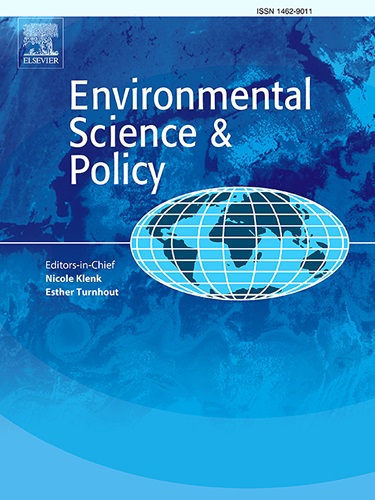Setting global deadlines for the elimination of major groups of persistent organic pollutants
IF 5.2
2区 环境科学与生态学
Q1 ENVIRONMENTAL SCIENCES
引用次数: 0
Abstract
The increasing number of substances nominated for evaluation and subsequently listed in the Stockholm Convention, while scientifically justified, highlights the urgent need to establish global timelines underpinned by a coherent strategy for their elimination. With the exception of polychlorinated biphenyls (PCBs), there are currently no legally binding deadlines for phasing out the production, use, or disposal of waste and stockpiles of other persistent organic pollutants (POPs). Given the lack of a compliance procedure and mechanism under the Convention, Parties must agree on clear deadlines, targets and strategies for POPs elimination, building on the momentum and drawing lessons from the shortcomings of the PCBs phase-out model. This would help mobilise a more concerted effort among Parties, stimulate stronger political will, guide funding priorities, and facilitate the transition to safer alternatives, all of which would also enhance the active engagement of independent scientists in chemical assessment, thereby helping to prevent repeated patterns of regrettable substitution. However, several factors may undermine the effectiveness of any agreed deadlines. These include delays in ratifying the Convention and its subsequent amendments, the high cost of shipment and destruction of stockpiles and waste, the absence of Harmonized System (HS) codes and standardized labelling for traceability and transparency, and the limited capacity of some Parties to identify POPs in products, articles and waste.
为消除主要类别的持久性有机污染物设定全球最后期限
越来越多的物质被提名供评估,并随后列入《斯德哥尔摩公约》,尽管在科学上是合理的,但突出表明迫切需要制定以一致的消除这些物质战略为基础的全球时间表。除多氯联苯(PCBs)外,目前对逐步淘汰废物的生产、使用或处置以及其他持久性有机污染物(POPs)的库存没有具有法律约束力的最后期限。鉴于《公约》下缺乏合规程序和机制,缔约方必须就消除持久性有机污染物的明确期限、目标和战略达成一致,借力于目前的势头,并从多氯联苯逐步淘汰模式的缺点中吸取教训。这将有助于调动缔约方之间更加协调一致的努力,激发更强的政治意愿,指导供资优先事项,并促进向更安全替代品的过渡,所有这些也将加强独立科学家对化学评估的积极参与,从而有助于防止令人遗憾的替代模式的重复。然而,有几个因素可能会破坏任何商定的最后期限的有效性。这些问题包括迟迟不批准《公约》及其随后的修正案,库存和废物的运输和销毁费用高昂,缺乏协调制度代码和可追溯性和透明度的标准化标签,以及一些缔约方识别产品、物品和废物中的持久性有机污染物的能力有限。
本文章由计算机程序翻译,如有差异,请以英文原文为准。
求助全文
约1分钟内获得全文
求助全文
来源期刊

Environmental Science & Policy
环境科学-环境科学
CiteScore
10.90
自引率
8.30%
发文量
332
审稿时长
68 days
期刊介绍:
Environmental Science & Policy promotes communication among government, business and industry, academia, and non-governmental organisations who are instrumental in the solution of environmental problems. It also seeks to advance interdisciplinary research of policy relevance on environmental issues such as climate change, biodiversity, environmental pollution and wastes, renewable and non-renewable natural resources, sustainability, and the interactions among these issues. The journal emphasises the linkages between these environmental issues and social and economic issues such as production, transport, consumption, growth, demographic changes, well-being, and health. However, the subject coverage will not be restricted to these issues and the introduction of new dimensions will be encouraged.
 求助内容:
求助内容: 应助结果提醒方式:
应助结果提醒方式:


